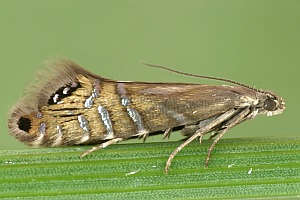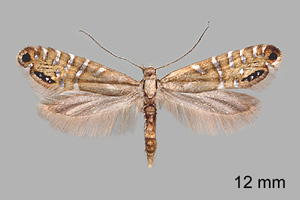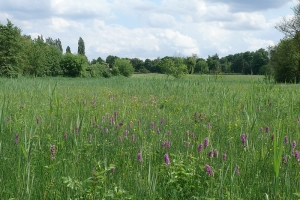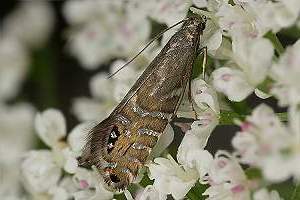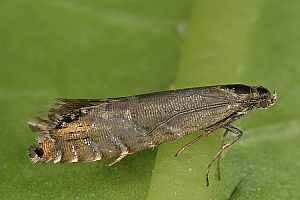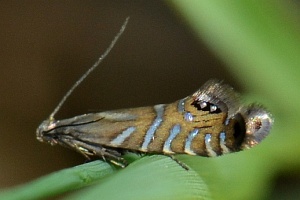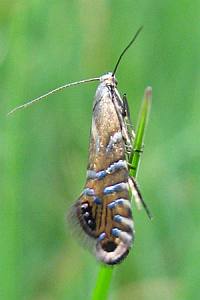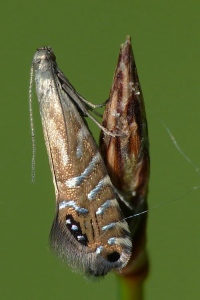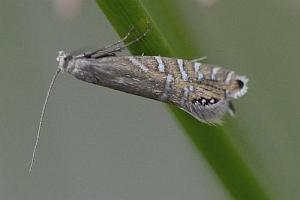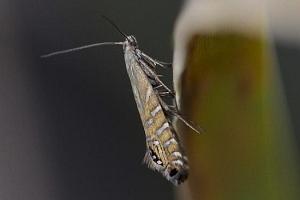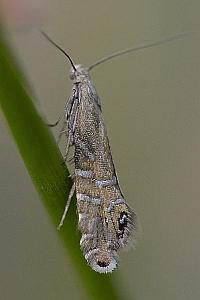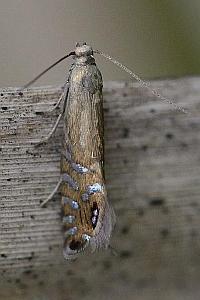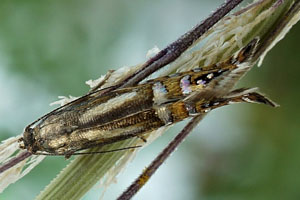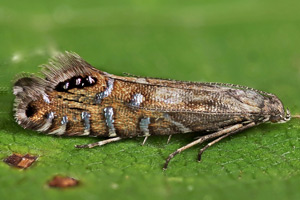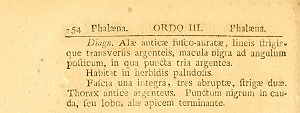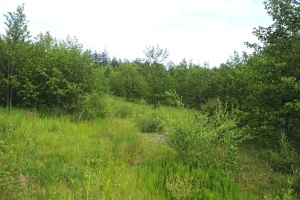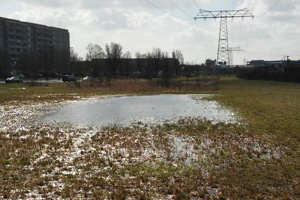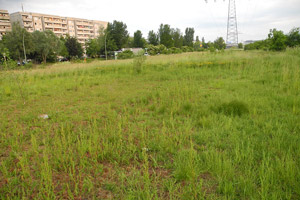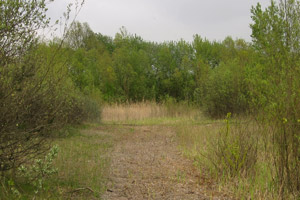

 +34Kontinente:EUAS
+34Kontinente:EUAS1. Lebendfotos
1.1. Falter
2. Diagnose
2.1. Weibchen
Durch die charakteristische Flügelzeichnung mit der Ocellenkette über dem Innenwinkel der Vorderflügel kann Glyphipterix thrasonella sofort von allen übrigen einheimischen Glyphipterix-Arten unterschieden werden [Rudolf Bryner].
2.2. Erstbeschreibung
3. Biologie
3.1. Habitat
3.2. Nahrung der Raupe
- [Juncaceae:] Juncus spp. ??? (Binsen ???)
Strenggenommen noch unbekannt! Pelham-Clinton (1985) vermerkt völlig zu recht sehr kritisch zur "life history": "Little known, and the larva apparently undiscribed. According to Toll (1956) the larva feed from autumn tospring in the seeds of rush (Juncus spp.) and also on sun-dew (Drosera spp.). The latter is a most unlikely foodplant, and if the larvae really fed in the seeds of Juncus they would surely be better known. Sich (1915) reported the females ovipositing in the heads of Juncus, but the larva all left the rush heads on hatching. Several authors including Meyrick (1928) state that the larva feeds in rush stems in April and May and pupates in this situation." Die ganze Larvalbiologie ist also noch von Grund auf zu klären. Binsen scheinen irgeneine Rolle zu spielen - welche ist aber noch offen.
(Autor: Erwin Rennwald)
4. Weitere Informationen
4.1. Andere Kombinationen
- Phalaena thrasonella Scopoli, 1763 [Originalkombination]
4.2. Synonyme
- Tinea klemannella Fabricius, 1781
- Tinea fueslella Fabricius, 1787
- Tinea fyeslella Fabricius, 1794
- Tinea ahornerella Hübner, 1796
- Tinea aillyella Hübner, 1796 [Digitalisat auf biodiversitylibrary.org] [Falter ausnahmsweise von Hübner in doppelter Größe abgebildet, im Textheft von 1796 fehlt die Art]
- Phalaena triguttella Donovan, 1804
- Gracillaria fueslii Haworth, 1828
- Aechmia poeyella Duponchel, 1840
- Glyphipteryx cladiella Stainton, 1859
- Glyphipteryx struvei Amsel, 1938
4.3. Literatur
- Beschreibung als Tinea aillyella: Hübner, J. [1796-1834]: Sammlung europäischer Schmetterlinge 8: pl. 1-71.
- Pelham-Clinton, E.C. (1985): Glyphipterigidae. — S. 400–407. In: Heath J, Emmet AM (Eds) The moths and butterflies of Great Britain and Ireland, 2. Colchester.
- Erstbeschreibung: Scopoli, J. A. (1763): Entomologia Carniolica exhibens insecta Carnioliae indigena et distributa in ordines, genera, species, varietates. Methodo Linnaeana. 1-421. Vindobonae (Trattner).


































